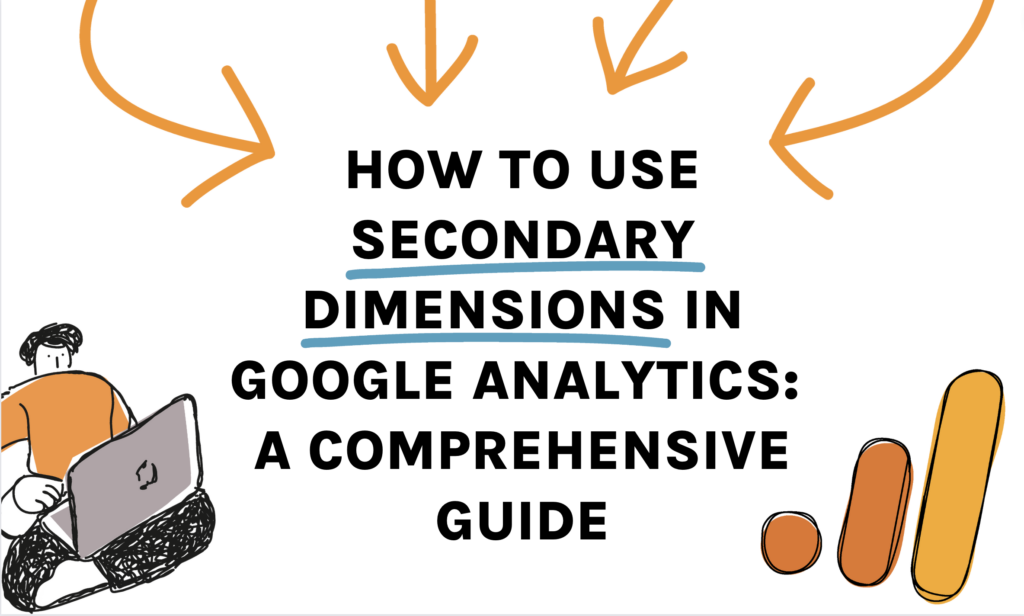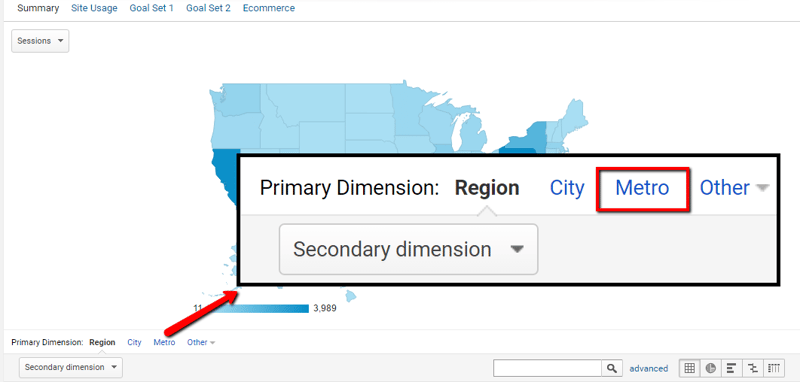Translating the Relevance of Secondary Dimension in Google Analytics: Everything About Its Value and Effect
In the realm of digital analytics, the application of additional measurements within Google Analytics offers as an essential device for discerning much deeper layers of data understandings. The importance of additional measurements lies in their capacity to give a nuanced sight of individual behavior and communication with a web site or platform.
Recognizing Second Measurements in Google Analytics
The understanding of second measurements in Google Analytics is essential for gaining deeper insights into customer behavior and internet site efficiency. While key measurements supply fundamental data points such as web traffic sources and page views, second measurements enable for a more nuanced evaluation by supplying extra context to these primary metrics. By incorporating additional dimensions, users can section and filter their data to reveal patterns and patterns that may not be right away obvious.

Revealing the Perks of Second Measurements
Structure upon the foundational understanding of additional measurements in Google Analytics, exploring the benefits they use exposes indispensable insights for improving information analysis and decision-making. By incorporating secondary dimensions, users can dig deeper into their information, gaining a much more extensive view of user habits, content performance, and other vital metrics.
Additionally, second dimensions provide context to primary information, providing extra layers of details that can help in comprehending customer communications and choices. This enhanced understanding can lead critical decision-making, bring about even more targeted advertising campaigns, site optimizations, and overall better performance. In significance, secondary dimensions serve as an effective device for opening much deeper understandings and making the most of the energy of Google Analytics for businesses and web site owners.
Leveraging Secondary Dimensions for Boosted Insights
By taking advantage of the power of additional measurements in Google Analytics, services can uncover deeper insights that drive notified calculated and decision-making optimization initiatives. Leveraging additional measurements permits organizations to dig beyond surface-level data and gain a more comprehensive understanding of user behavior, target market demographics, website traffic sources, and internet site efficiency. By incorporating key dimensions like website traffic resources with additional dimensions such as geographical place or device classification, businesses can identify which tools or regions are driving the most important traffic to their web site.
Furthermore, second dimensions allow services to sector and examine data extra efficiently, assisting them determine trends, patterns, and opportunities that may have or else gone unnoticed. By making use of secondary measurements, services can tailor their advertising techniques, content, and user experience to better meet the demands and choices of their target market. Fundamentally, leveraging additional dimensions in Google Analytics equips businesses to make data-driven choices that lead to boosted performance, raised ROI, and sustainable development.

Impact of Additional Measurements on Data Analysis
Enhancing information evaluation with the usage of additional dimensions in Google Analytics provides services with a deeper understanding of their on the internet performance metrics. By including secondary measurements, such as time of day, geographic area, or tool category, businesses can uncover valuable insights that might have been overlooked with primary measurements alone. This improved level of granularity enables more exact division of data, allowing businesses to identify patterns, patterns, and relationships that can drive calculated decision-making.

Taking Full Advantage Of Potential: Second Dimensions Methods
The strategic utilization of secondary dimensions in Google Analytics expands past improving data evaluation; it entails crafting targeted techniques to open the complete capacity of beneficial understandings for business development. By utilizing secondary dimensions efficiently, businesses can dive much deeper into their internet site web traffic, individual habits, and advertising and marketing campaigns to extract workable understandings. One essential approach is to incorporate second measurements with primary dimensions to obtain a comprehensive view of individual communications. Combining the main measurement of 'source/medium' with additional measurements like 'touchdown page' or 'tool category' can disclose which networks are driving web traffic to particular web pages or just how user behavior differs across devices.
Moreover, using additional measurements to segment information based upon individual demographics, actions, or technology can aid companies tailor their advertising efforts to particular audience sections. This targeted method can bring about boosted conversion prices, enhanced customer experiences, and ultimately, boosted ROI. By taking full advantage of the possibility of second measurements in Google Analytics, companies can make educated choices, maximize their on-line visibility, and drive lasting development.
Final Thought
In final thought, second measurements in Google Analytics play a vital role in offering much deeper understandings and enhancing information analysis. By utilizing additional measurements efficiently, services can obtain a much more extensive understanding of customer behavior and web site performance. Integrating secondary dimensions into information evaluation strategies can result in even more informed decision-making and enhanced general performance. It is necessary for services to take advantage of the power of second measurements to maximize their potential and attain better success in their on-line ventures (what is a “secondary dimension” in google analytics?).
While primary measurements supply basic data factors such as traffic resources and look at here now page views, second dimensions enable for a more nuanced analysis by supplying additional context to these key metrics. By incorporating main dimensions like website traffic sources with additional measurements such as geographic location or gadget group, organizations can recognize which areas or devices are driving the most useful traffic to their website.
By including additional measurements, such as time of day, geographic location, or gadget classification, services can reveal beneficial insights that might have been neglected with main measurements alone. One essential method is to combine secondary dimensions with key dimensions to gain an extensive sight of image source user interactions. Coupling the main measurement of 'source/medium' with secondary dimensions like 'touchdown page' or 'device classification' can disclose which channels are driving web traffic to details web pages or exactly how customer behavior differs across tools.